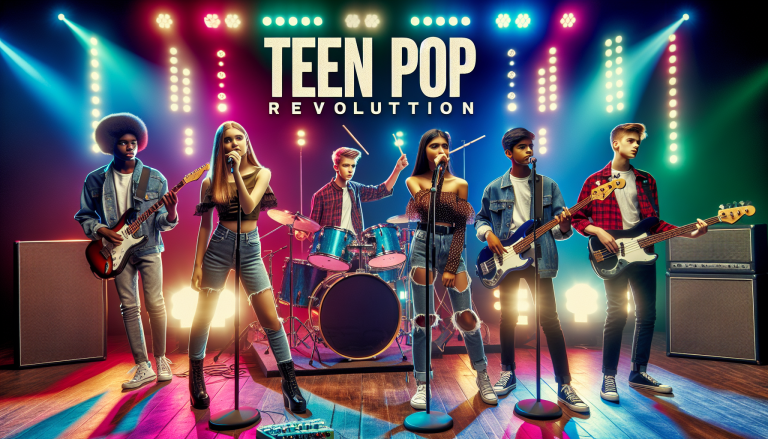Teen Pop: The Colorful Revolution of American Music
The Dawn of a Musical Phenomenon
Teen pop isn’t just a genre—it’s a cultural earthquake that transformed American music forever. Born from the vibrant intersection of pop music and youth culture, this electrifying musical movement burst onto the scene in the late 1980s and early 1990s, fundamentally reshaping how we understand music, celebrity, and teenage expression.
The historical roots of teen pop trace back to the bubblegum pop of the 1960s, but its modern incarnation emerged with a thunderous energy that would define an entire generation. Pioneers like New Kids on the Block cracked open the door, showing record labels that teenagers weren’t just consumers—they were a powerful cultural force capable of driving massive musical trends.
Defining the Genre: More Than Just Music
Teen pop is characterized by its infectious melodies, dance-friendly rhythms, and lyrics that speak directly to the emotional landscape of young people. It’s a genre that transcends mere musical notes, becoming a complete cultural experience that includes fashion, attitude, and identity.
The sound is typically upbeat, with polished production, memorable hooks, and vocal performances that prioritize enthusiasm and accessibility over technical complexity. Synthesizers, electronic beats, and carefully choreographed dance routines became signature elements that defined the genre’s aesthetic.
Iconic Artists Who Shaped a Generation
The 1990s and early 2000s saw an explosion of teen pop icons who became global phenomena. Britney Spears emerged as the quintessential teen pop superstar, her hit “…Baby One More Time” instantly becoming a cultural touchstone that defined an entire era. The music video, featuring Spears in a schoolgirl outfit, became an iconic image of late 90s pop culture.

NSYNC and Backstreet Boys revolutionized the boy band concept, creating a template for synchronized dance moves, harmonized vocals, and massive international fan bases. These groups weren’t just musical acts—they were global brands that dominated MTV, radio, and teenage bedroom walls.
Other significant artists like Christina Aguilera brought powerful vocal performances and a hint of R&B/Pop fusion to the genre, expanding its musical boundaries and showing that teen pop could be both commercially successful and musically sophisticated.
Groundbreaking Albums and Chart-Topping Hits
Several albums became watershed moments in teen pop history. Britney Spears’ “…Baby One More Time” and NSYNC’s “No Strings Attached” weren’t just albums—they were cultural events that sold millions of copies and defined a musical generation.
Notable songs like “Bye Bye Bye” by NSYNC, “Oops!… I Did It Again” by Britney Spears, and “Larger Than Life” by Backstreet Boys became anthems that transcended traditional musical boundaries, becoming part of the global cultural lexicon.
Cultural Impact and Lasting Legacy
Teen pop’s influence extends far beyond its musical boundaries. It democratized pop culture, giving teenagers unprecedented cultural power and visibility. These artists weren’t just musicians—they were style icons, role models, and cultural ambassadors who shaped fashion, dance, and social trends.
The genre also paved the way for future pop and R&B artists, creating a template for marketing, performance, and audience engagement that continues to influence the music industry today. Artists like Ariana Grande and Justin Bieber owe significant portions of their success to the groundwork laid by teen pop pioneers.
Evolution and Modern Resonance
While the pure teen pop sound has evolved, its DNA remains embedded in contemporary pop music. Today’s artists continue to draw inspiration from the genre’s emphasis on catchy melodies, dynamic performances, and strong visual storytelling.
Modern pop has become more diverse and genre-blending, incorporating elements of hip-hop, electronic music, and global sounds. Yet the core DNA of teen pop—its ability to capture youthful energy and emotional authenticity—remains powerfully relevant.
As music critic Simon Reynolds noted, “Teen pop was never just about the music—it was about creating entire worlds of fantasy, aspiration, and collective teenage experience.”
The teen pop revolution represents more than a musical genre—it’s a testament to the power of youth culture, the magic of pop music, and the incredible ability of art to capture and transform collective imagination.
From its humble beginnings to its status as a global cultural force, teen pop remains a vibrant, transformative chapter in American music history—a genre that didn’t just reflect youth culture but actively created it.